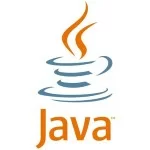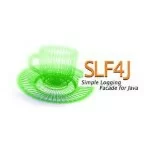Reactive Programming with Project Reactor and Spring WebFlux
Reactive programming has transformed the way modern applications handle scalability, concurrency, and responsiveness. With its non-blocking, event-driven approach, reactive programming is a powerful paradigm for building highly performant systems. In the Java ecosystem, Project Reactor and Spring WebFlux are the go-to tools for implementing reactive programming principles.
This guide explores the core concepts of Project Reactor and Spring WebFlux, highlighting their synergy, use cases, and best practices.
1. What Is Reactive Programming?
Reactive programming is an asynchronous programming paradigm centered around handling streams of data and propagating changes through an application. Instead of blocking threads, reactive systems rely on non-blocking I/O and a declarative approach to handling events, making them ideal for applications with high throughput requirements.
1.1 Core Characteristics of Reactive Programming:
- Asynchronous and Non-blocking: No threads are blocked during data processing.
- Event-driven: The system responds to incoming events dynamically.
- Backpressure Handling: Provides control over data flow to prevent system overload.
Reactive programming in Java gained traction with the Reactive Streams specification, which provides a standard for asynchronous stream processing with non-blocking backpressure.
1.2 Diagram: Reactive Flow in Spring WebFlux
Below is a simplified flow diagram representing the key components and flow in a Spring WebFlux application:
01 02 03 04 05 06 07 08 09 10 11 12 13 14 | [Client Request] ↓[Spring WebFlux Router] ↓[Controller Method] ↓[Reactive Pipeline] (Mono/Flux) ↓[Non-blocking I/O] ↓[Data Source or External API] ↓[Response Stream to Client] |
This flow showcases how WebFlux handles a request asynchronously using non-blocking I/O and reactive streams (Mono/Flux).
2. Project Reactor: The Heart of Reactive Programming
Project Reactor is a library that implements the Reactive Streams specification. It provides two key types:
- Mono: Represents a single value or an empty result (like
Optional). - Flux: Represents a stream of multiple elements (like
List).
Key Features of Project Reactor:
- Declarative API: A functional approach for working with streams of data.
- Rich Operators: A wide range of operators for transforming, filtering, and combining streams.
- Backpressure Support: Built-in mechanisms to handle data flow.
3. Spring WebFlux: A Reactive Web Framework
Spring WebFlux is the reactive counterpart of Spring MVC, designed for building non-blocking, reactive web applications. It is built on Project Reactor and fully supports the Reactive Streams specification.
3.1 Key Features of Spring WebFlux:
- Non-blocking I/O: Leverages servers like Netty, Tomcat, or Jetty in non-blocking mode.
- Functional Endpoints: In addition to traditional annotations, WebFlux allows defining routes using a functional programming style.
- Streaming and SSE Support: Ideal for real-time applications requiring server-sent events or streaming responses.
3.2 When to Use Spring WebFlux
Spring WebFlux is well-suited for applications that require non-blocking, high-performance operations, especially under heavy concurrency. Below is a table highlighting the key scenarios where Spring WebFlux excels:
| Use Case | Why Spring WebFlux is Ideal |
|---|---|
| Real-Time APIs | Perfect for applications that need real-time communication (e.g., chat, live updates), supporting Server-Sent Events (SSE) and streaming. |
| High-Concurrency Applications | Handles thousands of concurrent requests efficiently with non-blocking I/O, making it ideal for high-traffic systems. |
| Microservices Architecture | Efficiently handles asynchronous communication between microservices, ensuring scalability and responsiveness. |
| Applications with High I/O Operations | Works well for apps relying on external services or databases, processing requests without blocking resources while waiting for I/O operations. |
| Event-Driven Systems | Integrates seamlessly with event-driven architectures and message brokers, ensuring minimal latency in event processing. |
| Cloud-Native and Serverless Applications | Optimizes resource usage for cloud-native environments or serverless platforms, reducing execution time and cost. |
| APIs with Long-Running Processes | Supports long-running processes, allowing partial responses or updates as tasks are processed asynchronously. |
This table provides a clear overview of the various use cases where Spring WebFlux shines, allowing developers to choose the right tool for building scalable, responsive, and high-performance applications.
4. Project Reactor and WebFlux in Action
Spring WebFlux integrates seamlessly with Project Reactor, enabling you to build reactive applications with ease. For example:
- Handling Requests with Mono and Flux: In WebFlux, controllers return
MonoorFluxobjects to represent asynchronous responses. - Streaming Data: Use
Fluxto stream continuous data, such as real-time updates or large datasets. - Error Handling: Both libraries provide robust mechanisms for handling errors in a reactive pipeline without blocking threads.
5. Benefits of Using Project Reactor and Spring WebFlux
Project Reactor and Spring WebFlux together bring a powerful set of benefits for building modern, scalable applications. By adopting a reactive approach, they offer improved scalability, efficient resource management, and faster response times, all while keeping resource consumption low. The declarative programming style provided by Project Reactor makes it easier for developers to write clean, readable code while handling complex asynchronous data flows. Additionally, the integration of non-blocking I/O ensures that your applications can handle more requests concurrently without overwhelming the system. These benefits make it easier to create applications that are both performant and resilient.
Benefits in Table Format
| Benefit | Description |
|---|---|
| Scalability | Non-blocking I/O allows applications to handle more concurrent requests with fewer resources, making them more scalable. |
| Resource Efficiency | Efficient use of CPU and memory as threads are not blocked during I/O operations, reducing the overhead of managing threads. |
| Faster Response Times | Asynchronous event handling and reactive streams enable quicker responses under load, improving user experience. |
| Declarative and Functional API | Project Reactor provides a functional, declarative approach to handling streams of data, making complex operations easier. |
| Backpressure Handling | Built-in support for backpressure ensures data flow is controlled, preventing system overload. |
| High Throughput | Optimized for high-volume applications, such as microservices and real-time data systems, with minimal impact on performance. |
| Integration with Spring Ecosystem | Seamlessly integrates with other Spring projects (e.g., Spring Data, Spring Security) to enhance application development. |
This table captures the key advantages of using Project Reactor and Spring WebFlux, making it clear how they contribute to building efficient, scalable, and responsive applications.
6. Challenges and Best Practices
While reactive programming is powerful, it also comes with challenges:
Challenges
- Steeper Learning Curve: Requires understanding reactive concepts and functional programming.
- Debugging Complexity: Reactive streams can be harder to debug than imperative code.
- Compatibility: Some traditional libraries might not support non-blocking I/O.
Best Practices
- Understand Backpressure: Design your application to handle data flow effectively.
- Leverage Spring Ecosystem: Use reactive-compatible libraries (e.g., Spring Data R2DBC for databases).
- Use Context Propagation: Preserve context (e.g., tracing or security) across reactive streams.
- Monitor Performance: Tools like BlockHound can help detect blocking code in reactive pipelines.
7. Conclusion
In today’s fast-paced, high-demand application environments, Spring WebFlux, powered by Project Reactor, is no longer just a nice-to-have — it is a necessity for developers aiming to build scalable, efficient, and future-proof systems. Its non-blocking, event-driven architecture ensures that applications are ready to handle an ever-increasing volume of requests without compromising on performance. The combination of Project Reactor’s reactive programming model and Spring WebFlux’s seamless integration with the Spring ecosystem provides a robust foundation for building high-throughput, resilient applications.
For developers working on microservices, real-time systems, or cloud-native applications, embracing WebFlux isn’t just an option; it’s a strategic move towards staying competitive in an ever-evolving tech landscape. The benefits of resource efficiency, speed, and scalability are too significant to overlook. If an organization aims to deliver top-tier performance and maintainability in the face of growing demands, Spring WebFlux with Project Reactor is unequivocally the way forward.






